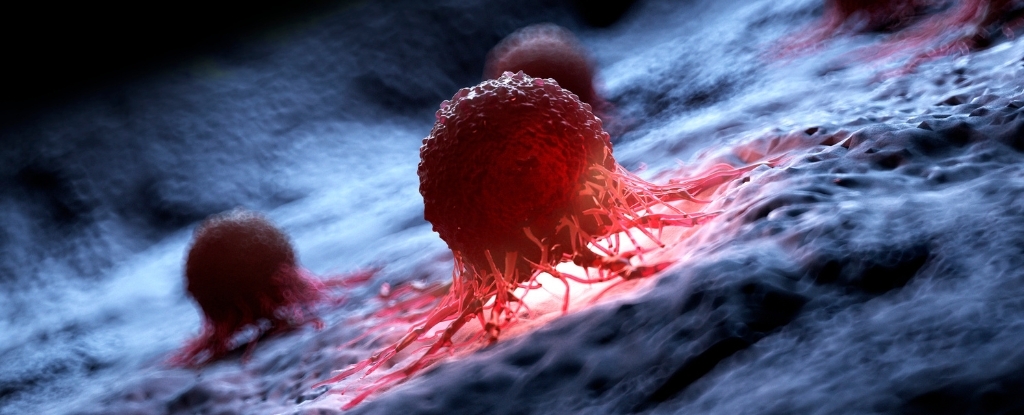I can destroy 99% of cancer cells in a lab using a hammer. The important part is whether you can do the same in a person without killing them.

Or fire.
First thing that came to mind.
You’d think that it would be a might difficult getting a hammer into a body, but I salute you.
You don’t need to. Just keep hammering away until you reach the cancer. Phase II trials start soon.
^Need volunteers.
I would argue it is actually quite easy to get a hammer into a body. Precision and accuracy are the larger concerns.
If you simply get a large enough hammer those concerns go away.
Or smaller, depending on point of entry.
You won’t get it in there with that attitude.
The test was done on mice where half of them ended cancer free and I assume survived.
No lab mice survive the lab unfortunately.
Aminocyanine molecules are already used in bioimaging as synthetic dyes. Commonly used in low doses to detect cancer, they stay stable in water and are very good at attaching themselves to the outside of cells.
Looks like an interesting choice, since they were already made to attach to cancer cells.
They work like an existing method, but with infrared light vs visible, which penetrates deeper into the body.
The thing about the used molecules is that they attach to the cancer more than other cells.
Apart from that you can concentrate the infrared light at the main clusters.
I’d say it is an improvement. Even if only the main clusters are destroyed it’s noninvasive way to reduce the chance of mutation (less cancer cells means less chances for a mutation to gain chemo resistance).
I agree although the term used sounds like something stan lee coined.
Does this mean playing competitive chess could prevent cancer??
99% of non-cancerous cells were also destroyed.
I don’t see the part of the article that mentions that?
I don’t get this comment at all. Wat?
Killing cancer cells is easy enough, the hard part is only killing cancerous cells
He’s saying it destroys all cells, cancerous and non-cancerous. Don’t know if it’s true, haven’t read the article.
Obviously it’s not true hence I don’t get it. The holy grail is to destroy just cancerous cells, it’s easy to destroy all. 🤷♂️
The article makes no mention to the molecules only working on cancer cells. The molecules, according to the article, attach to cell membranes, and then the molecules are jiggled to blow up the cells. That process doesn’t mention an ability to differentiate between cancer and non-cancer cells. The technique was tried on a culture growth, where a hammer would have the same results. It was also tried on mice, where half were left cancer-free, but little is said about the process, the specifics of the results, or what happened to the other half of mice.
We all get the goal of cancer research, OP is just doubtful that this achieves it, as am I, as well as anyone who’s read good news about eradicating cancer in the past few decades. Most are duds or go nowhere even if initially promising, so…
A chemical that can’t target cancer cells can be triggered to vibrate in such a way that it destroys cell membranes by a light source that attenuates by about 90% over 1mm of flesh (down to 1% of the original strength at 2mm).
If they could target just cancer cells, it would work for some skin cancers.
Infrared and near infrared transmit a good amount of heat. I imagine that even if they figure out the targeting issue, unless the light to vibration process is highly efficient, the point at which the light source is just burning the patient’s flesh will be reached long before there’s anything but a limited use case.I guess the mechanism is good to know about, but it’s unlikely to turn into a cure for cancer.
i asked this in another thread, how do they get the novel molecule to attach to only cancer cells. apparently they havent gotten that far yet.
All I found was this from the article
Aminocyanine molecules are already used in bioimaging as synthetic dyes. Commonly used in low doses to detect cancer, they stay stable in water and are very good at attaching themselves to the outside of cells.
Not sure if just attached to cancer cells or other cells too.
Doesn’t a microwave vibrate molecules?
Yes, in a sense. It technically isn’t vibrating them, but rapidly spinning them due to the constantly changing magnetic field (produced by the magnetron).
Since water has a dipole moment (one side of the molecule experiences a slight positive charge, while one side experiences a slight negative charge) it will react to changes in an electric field just like a magnet would
Edit: I’d also like to add this is not specific to water. Some fats and other food material also undergoes that rotation, and the same concept (with different frequencies and wavelengths) is used in industrial processes all the time to quickly, and efficiently heat materials
“Inject the Jiggler.”
So we’re back to things like what led to the original vibrators.
You may be onto something there. Near-infrared activated chemical vibrators… how fast do these jiggle again?











